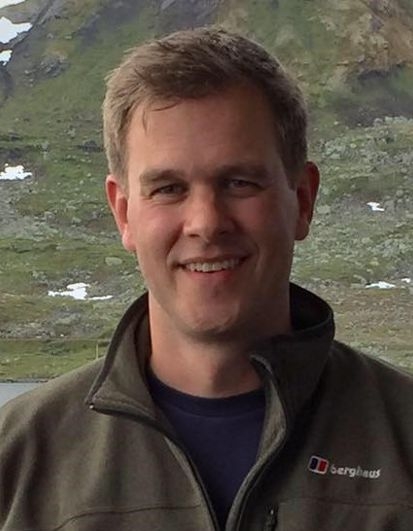

Dr Anthony Butcher
Biography
A ‘pure’ geologist by training (graduating from the University of Portsmouth in 1998), I became interested in palaeontology as a tool for solving geological problems both during my degree and subsequent postgraduate/postdoctoral research. My specialisation into micropalaeontology is particularly well-suited for such tasks, as described in more detail below.
I am the Course Leader for our BSc (Hons) Palaeontology degree course, and also the Outreach and Public Engagement Coordinator for the School of Earth & Environmental Sciences (SEES).
I both teach on and coordinate various units within SEES, including geological mapping and field techniques, micropalaeontology/palynology, invertebrate palaeontology, and laboratory/analytical techniques.
Research interests
As a biostratigraphical palynologist, I use organic-walled microfossils to establish both the age of geological strata and their environment of deposition - these data can then be applied to solving geological problems. A particular area of specialisation is the use of chitinozoans (an extinct group of marine plankton) for the dating of Palaeozoic strata, and the recognition of Silurian hydrocarbon source rocks. Palynology is an extremely versatile type of micropalaeontology and can be used not only to date strata, but also as a proxy for sea level change, climate, ecology, and salinity in the geological past.
Given its application to the hydrocarbon industry, I am able to introduce my research into several of the units that I teach, giving students the opportunity to see how what they are learning in class can be applied in the real world, and how it can boost their employability.
I have also become active in palaeobotanical research, using new cutting-edge techniques to re-analyse some of the earliest land plant fossils.
Research outputs
2025
Middle Devonian chitinozoan assemblages of northwestern Argentina and southern Bolivia: new biostratigraphic and palaeogeographical insights
Camina, S., Rubinstein, C., Butcher, A., Garcia Muro, V., Vergani, G., Pereira, M.
1 Dec 2025, In: Review of Palaeobotany and Palynology. 343, 14p., 105413
Research output: Article
Taxonomic revision of the Devonian chitinozoan Ramochitina boliviensis Grahn, 2002, a junior synonym of Ramochitina ramosi Sommer & van Boekel, 1964
Camina, S. C., Rubinstein, C., Butcher, A.
31 Mar 2025, In: Palynology
Research output: Article
2024
Chitinozoan-based paleogeographic patterns in the Lower and Middle Devonian. A review of the similarity coefficient methods
Camina, S., Rubinstein, C., Butcher, A.
24 Jun 2024,
Research output: Abstract
Exceptionally well-preserved chitinozoans from the Lower Silurian Measley Ridge Roadcut (Ohio, USA)
Camina, S., Butcher, A., Kleffner, M. A.
27 May 2024,
Research output: Abstract
Middle–late Silurian and Early Devonian chitinozoans from the Chacoparaná Basin, Salta Province, Argentina
Camina, S., Rubinstein, C., Butcher, A., Lovecchio, J.
30 Apr 2024, In: Ameghiniana. 61, 2, p. 93-117
Research output: Article
A new chitinozoan assemblage from the Middle Devonian Los Monos Formation (sub-Andean basin, southern Bolivia) and its biozonal implications for Western Gondwana
Camina, S., Rubinstein, C., Butcher, A., Garcia Muro, V., Vergani, G., Pereira, M.
9 Apr 2024, In: PLoS One. 19, 4, 48p., e0297233
Research output: Article
2023
Hlasna Treban section, Czech Republic: A proposed global stratotype for the base of the Aeronian Stage
Storch, P., Manda, S., Butcher, A., Vodicka, J., Frýda, J., Tasaryova, Z., Chadimova, L., Melchin, M. J.
11 Jul 2023,
Research output: Abstract
2021
Laser-Stimulated Fluorescence reveals unseen details in fossils from the Upper Jurassic Solnhofen Limestones
Barlow, L., Pittman, M., Butcher, A., Martill, D., Kaye, T.
22 Dec 2021, In: Royal Society Open Science. 8, 12, 13p.
Research output: Article
Two intriguing pluricolumnals (Crinoidea) from the Lower Palaeozoic of Powys and Shropshire
Donovan, S. K., Butcher, A.
1 Apr 2021, In: Proceedings of the Geologists' Association. 132, 2, p. 170-173, 4p.
Research output: Article
2020
Chitinozoans
Butcher, A.
20 Nov 2020,
Research output: Chapter (peer-reviewed)
